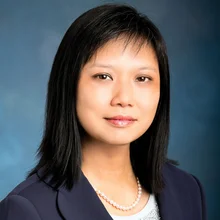
Eastspring seeks to nurture growth with better data
Data mapping key to asset manager’s plans as parent pivots to Asia

Eastspring Investments, the Asian asset management firm, and its UK-based parent Prudential, are trusting to ambition: Eastspring that capturing improved risk management data will drive competitive advantage for its funds; and Prudential that Eastspring’s name will prove prophetic for regional growth in Asia.
“Being able to have a more sophisticated view of the risk management profile of a particular fund allows fund managers to take better investment decisions on behalf of their clients,” says Siew Ping Gwee, Eastspring’s chief risk officer.
Asia is a major cornerstone of Prudential’s global strategy. Although UK-listed, the financial services company now describes itself as “Asia-focused”. In October, it put its European savings and investments business – M&G – on the block and announced that it plans to target markets in the US and Asia for future growth. In doing so, it will be leaning heavily on Eastspring for results.
Eastspring’s main hub is Singapore, but it has operations in a further 10 Asian markets and distribution channels in the UK and US. The firm has a total of $216 billion assets under management, according to financial figures reported at year-end (June 30, 2019). A statement on Eastspring’s website says that, as of June, S$181.74 billion ($134 billion) of this money – 62% of total funds – was managed in Singapore, although the amount of business being done overseas is set to increase, as its corporate acquisitions indicate.
Eastspring showed something of its appetite for expansion at the start of October, when it purchased a 50.1% stake in Bangkok-based Thanachart Fund Management. This is the second such acquisition in a relatively short space of time. Just last year, the fund manager purchased a 65% stake in the asset management unit of Thailand’s TMB Bank.
Better data, better days

Gwee’s team has spent the past two years refining the way in which it captures and presents risk management data, so that investment teams are able to get a more holistic profile of the funds they manage. Gwee is quick to point out, however, that the role of the risk management unit is not to influence investment decisions.
“Obviously, whether the fund managers do anything in a particular direction is up to them – we do not try and second-guess their decisions,” says Gwee.
Until relatively recently, Eastspring generated its risk reports from data recorded on Excel spreadsheets, but two years ago the firm switched over to BlackRock’s Aladdin risk analysis platform to calculate its risk parameters, which Gwee says has allowed the firm to develop a much more sophisticated understanding of risk.
Before this, Eastspring had only a limited means of anticipating redemption levels – or how much money was likely to leave a fund at any given point. While the risk team could see information on existing levels at individual funds, it was unable to predict when the largest redemptions were likely to take place. So in order to hedge unanticipated redemptions, funds would have to sit on large amounts of cash that could quickly be deployed in the event of a redemption spike. Not the most efficient use of resources.
“Clients want to be fully invested. They don’t like it if they are having to pay fees for their money to just sit around in a cash account,” says Gwee.
Being able to better manage cash positions translates into better returns for clients and should improve the firm’s ability to win market share, Gwee adds. “With a granular level of data, fund managers are able to manage their cash positions much better. If you know that redemptions are likely to peak at quarter-end and how many days before or after quarter-end, for example, you might want to hold off buying additional stock – or sell some of your stock – so that you have enough cash to meet these redemptions and, therefore, reduce transaction costs for the fund.”
Gwee’s team monitors risk parameters on a monthly basis. They sit down once every quarter with the investment team to analyse the data that has been compiled internally, along with data sourced from BlackRock’s Aladdin portal. The teams go through risk parameters one by one to highlight any imminent stress conditions they see. They will look out for issues such as excessive tracking errors and risk concentrations in individual markets or within types of trading activities.
“These metrics are already closely monitored by fund managers and analysts on a regular basis, but our value-added is to identify those risk issues that are potentially overlooked by fund managers,” says Gwee. “This leads to better checks and balances within the funds, and within the firm.”
Being able to have a more sophisticated view of the risk management profile of a particular fund allows fund managers to take better investment decisions on behalf of their clients
Siew Ping Gwee, Eastspring
Liquid assets
The risk management team pays particularly close attention to liquidity risk – a key concern for managers of open-ended funds where investor money can be used to issue shares. Failing to have a proper grasp of liquidity risk can mean being unable to raise money quickly enough to meet liabilities as they fall due. Such a scenario would not only damage a fund’s reputation but could cause it to run afoul of regulators.
“If you are invested in something that you can’t sell on the market for X number of days, but you have a redemption coming up in two days, then you are potentially in trouble,” says Gwee. “Liquidity risk is key in fund management and you have to manage it very carefully.”
These considerations are front of mind for the asset management industry more generally. In Europe, regulators are becoming concerned about weak liquidity risk management. After consulting with the industry, the European Securities and Markets Authority published a set of guidelines that, among other things, called for more rigorous stress-testing standards to promote greater confidence across the asset management sector.
Proceeds from redemptions are typically paid to clients within two or three days of the transaction date (T+2 or T+3), so funds need to hold a sufficient number of positions that can be liquidated within that time period in order to cover potential outflows.
The kind of dialogue Eastpring has between its risk and investment management teams has a twin benefit, says Gwee: not only does it improve the quality of responses to client enquiries, but it can also help satisfy any concerns that regulators might have.
“It’s all about having richer information,” says Gwee. “If we can get that additional information and those additional data points, it will enrich the view that fund managers have on the world and, working in partnership together, we run a better business.”
Update, November 6, 2019: This article was amended with a different figure for Eastspring’s assets under management of $216 billion, rather than $213 billion.
Editing by Louise Marshall
Only users who have a paid subscription or are part of a corporate subscription are able to print or copy content.
To access these options, along with all other subscription benefits, please contact info@risk.net or view our subscription options here: http://subscriptions.risk.net/subscribe
You are currently unable to print this content. Please contact info@risk.net to find out more.
You are currently unable to copy this content. Please contact info@risk.net to find out more.
Copyright Infopro Digital Limited. All rights reserved.
As outlined in our terms and conditions, https://www.infopro-digital.com/terms-and-conditions/subscriptions/ (point 2.4), printing is limited to a single copy.
If you would like to purchase additional rights please email info@risk.net
Copyright Infopro Digital Limited. All rights reserved.
You may share this content using our article tools. As outlined in our terms and conditions, https://www.infopro-digital.com/terms-and-conditions/subscriptions/ (clause 2.4), an Authorised User may only make one copy of the materials for their own personal use. You must also comply with the restrictions in clause 2.5.
If you would like to purchase additional rights please email info@risk.net
More on Investing
BlackRock appoints Pierre Sarrau as chief risk officer
Current CRO Edward Fishwick will be head of research at BlackRock’s RQA group
Japan’s yen swaps go global
JSCC isn’t just clearing swaps, it is clearing the way for the next stage of Japan’s financial evolution
How Bessent learned to stop worrying and love the T-bill
Short-dated issuance shows no signs of slowing. Some fear it could end badly.
Why a Trumpian world could be good for trend
Trump’s U-turns have hit returns, but the forces that put him in office could revive the investment strategy
Hedge fund holdouts boost euro steepener bets into year-end
After some investors took profits in September, those that stayed in the trade are now doubling down
Dutch pensions weigh hedge unwinds ahead of transition
As January 1 nears, Dutch pension funds consider unwind timing to avoid rush to the exit in thin year-end liquidity
BlackRock, Citadel Securities, Nasdaq mull tokenised equities’ impact on regulations
An SEC panel recently debated the ramifications of a future with tokenised equities
Institutional priorities in multi-asset investing
Private markets, broader exposures and the race for integration







